I loved Orvieto. I loved everything about it. When I told people I was going to be there for five days, everyone thought I was crazy.
“But, what are you going to DO in such a small town for five days??”
Well, one of the things I was looking forward to doing was exploring the plethora of Etruscan caves and crypts, starting with the Necropoli di Crocifisso del Tufo. It was named after a cross of “tufo”, or volcanic rock (that creates the plateau on which Orvieto sits), that was carved in the 16th century in deposited in a nearby church. The necropolis itself wasn’t discovered – or, there are no documents mentioning its discovery – until the early 19th century when locals were building a road nearby.
So I woke up, had a wonderful breakfast at my B&B, and headed toward Porta Vivaria. 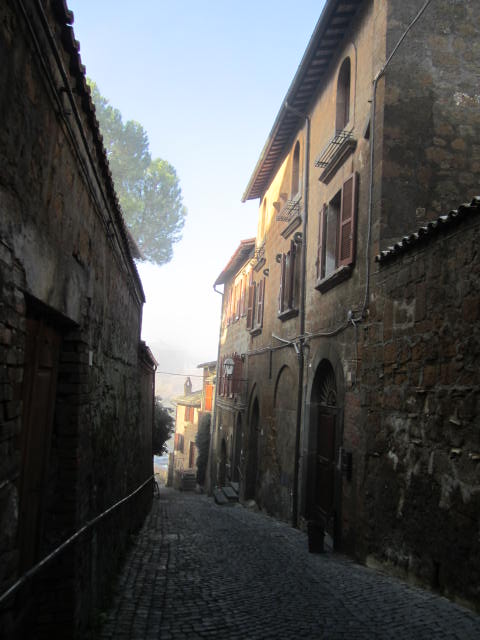
Almost the entire time I was there, the countryside around Orvieto was covered in a cloak of fog, the city itself jutting above the cloud on its high seat. As I descended through the walls of the city, it was like I was entering that scene in a horror movie where everything looks creepy but the birds are still chirping and no one is screaming yet – you know the scene I mean.
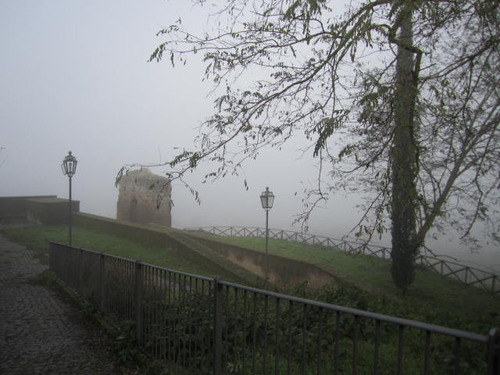
The “Rupe”, or rock, on which Orvieto was built was formed over the course of three hundred thousand years (!!) from the final volcanic eruption in the Volsini Mountains. As you walk down the path toward the necropolis the rock looms above you, moss and algae growing along its jagged edges.
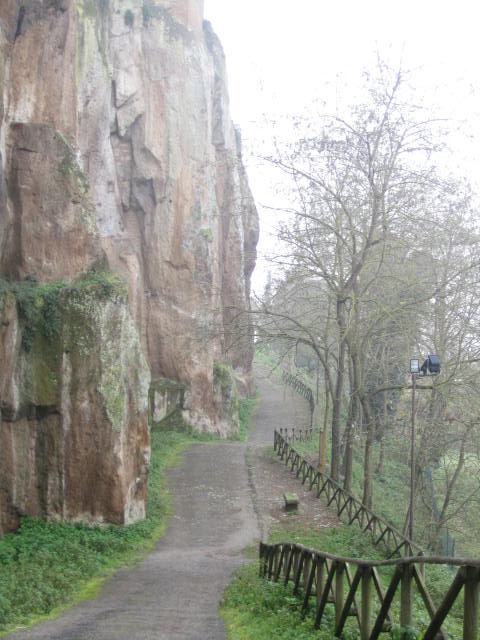
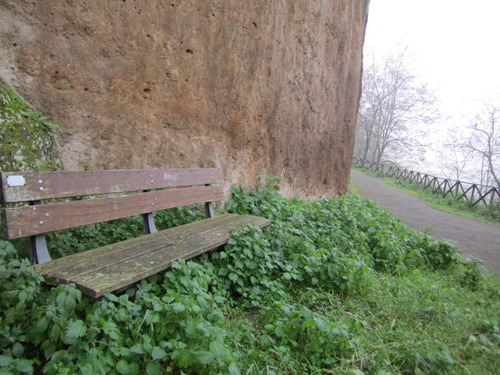
I was tempted to stop for a bit when I saw a bench, read for a while in this tranquil spot, but then I looked to my right an saw it: Necropoli di Corcifisso del Tufo. Those squares of green are the “roofs” of the tombs.
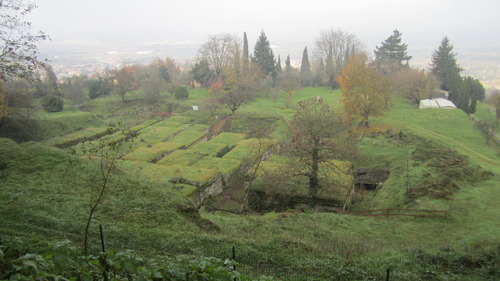
My only problem was how to get down there… There didn’t seem to be a path that led down to the necropolis, and the only other path I had seen seemed to go in the opposite direction.
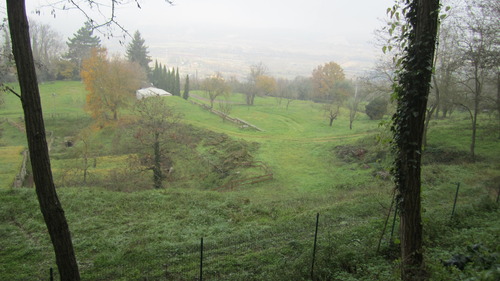
So I improvised. This kind of looks like a trail, right?
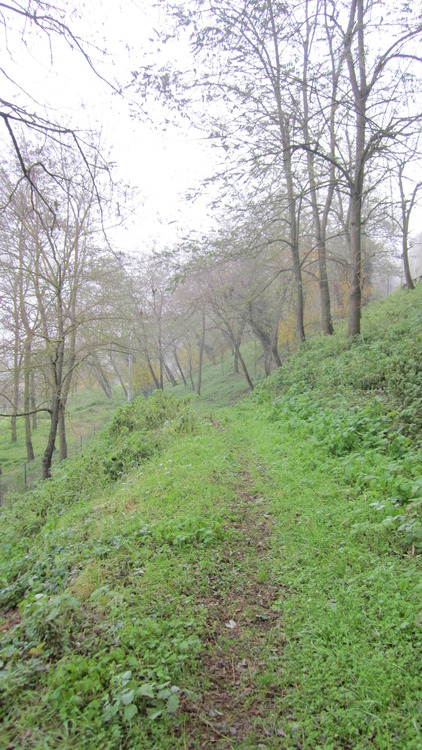
But then, after walking for about five minutes through the wet grass and clover, I found myself at the bottom of a long flight of steps. A flight of steps that curved around from above, back the way I had come. I guess the path I had seen at the beginning, where the trail forked, actually did eventually lead down to the necropolis! Oh, well…
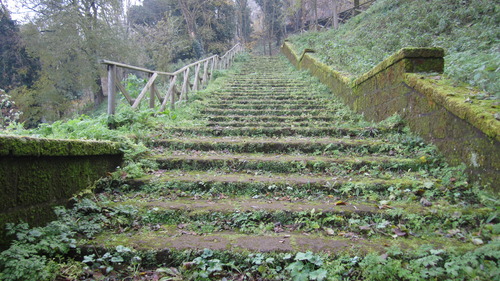
Admission for i Necropoli di Crocifisso del Tufo was included in my “Carta Unica” (the Orvieto tourism card), but would’ve otherwise been only €3. There’s a “map” at the entrance, but unless you’re good at reading blueprints I’d suggest just wandering around. That’s what I did!
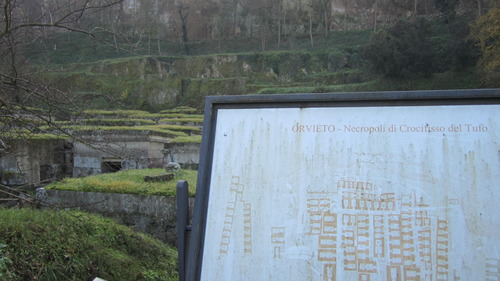
You have to take a few stairs down into the necropolis, as the “roofs” are pretty much at ground level. The entrances to the tombs, however, are built half-way up, meaning that the tomb is half underground and only half above ground.
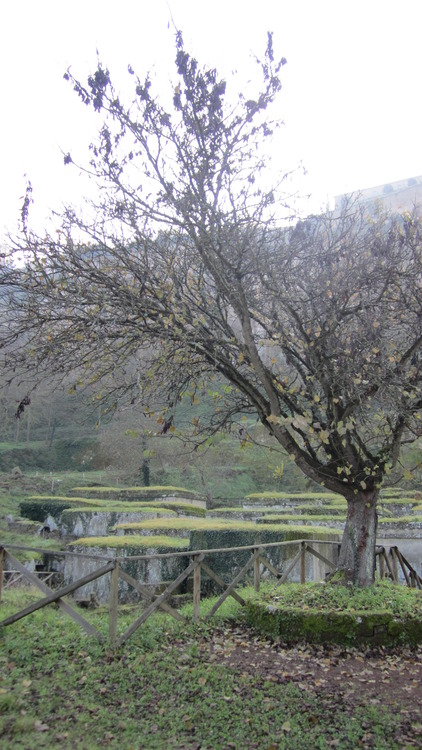
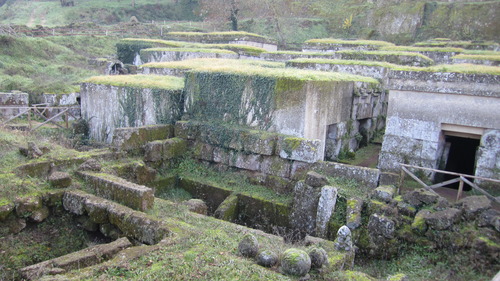
It’s laid out like a city with several streets intersecting to form a grid. This is said to be its outstanding feature (which leads me to believe that this type of plan or layout of burial sites was unusual in the 6th century BC, when it was built). Archeologists think it was laid out to follow the edge of a nearby road at the time.
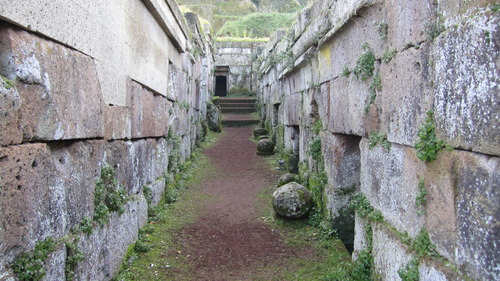
You can climb down into the tombs if you’d like to – there are no gates or ropes preventing you from doing so – but this little spider, his massive web and those of all his little spidey buddies kept me from entering most of them.
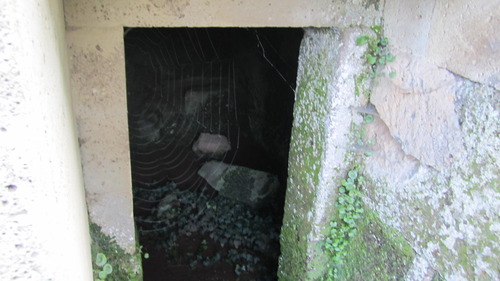
I did enter a few, though, and found most of the layouts pretty similar. Most were one simple room; only a few had a wall divider separating the chamber into two. The walls and ceiling are all made of the same dry, tufo rock. The ceiling is vaulted – one of the tombs had no front and back, giving a good view of how it was constructed.
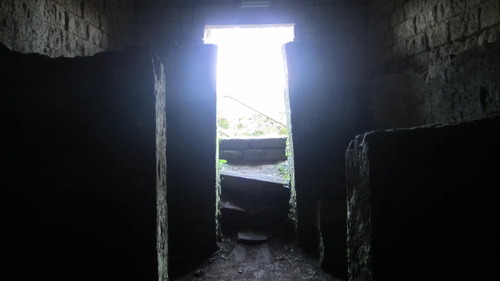
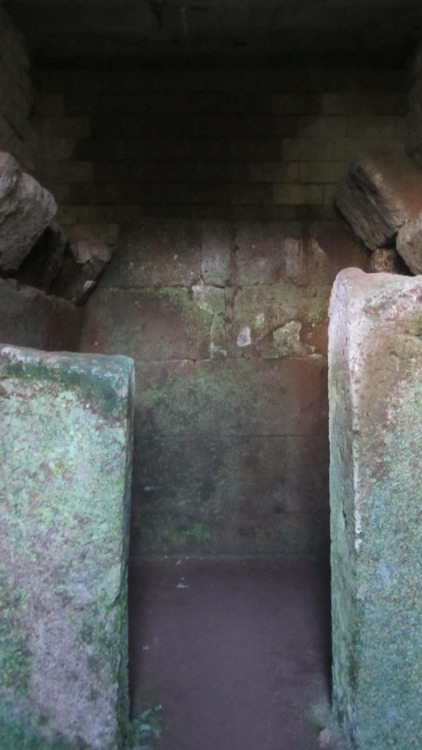
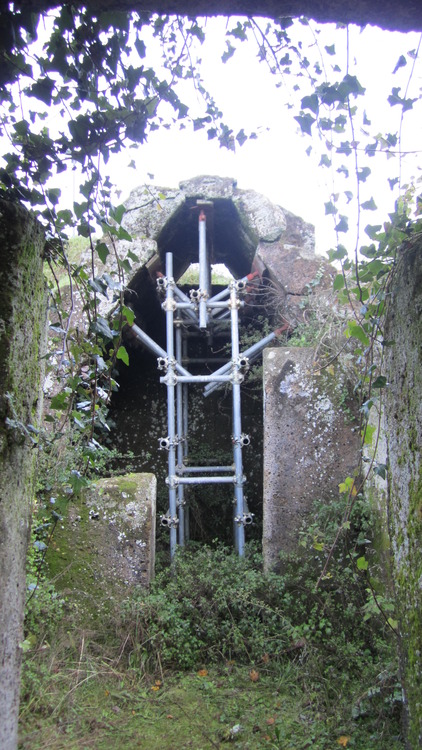
Two benches usually lined the walls. The deceased and their funerary objects would be arranged on these, when they were not cremated (which was supposedly quite common). The position of the benches reminds me of the living room benches in Herculaneum or Pompeii, when everyone would lay on their left side to eat and drink with their right hand. Probably has nothing to do with it, but that’s what it looks like.
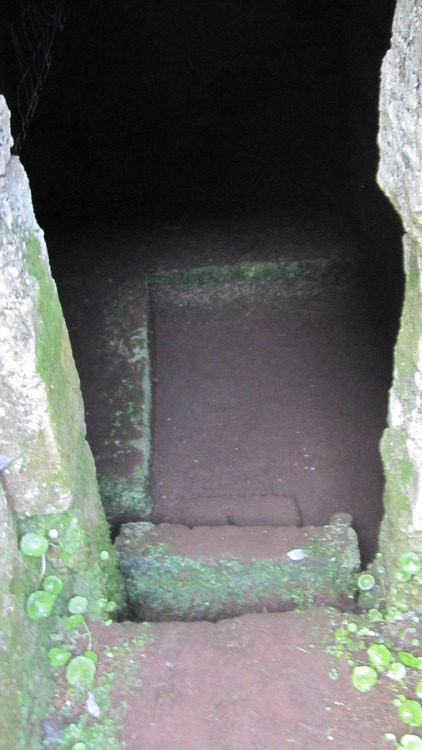
One had an escape hole out the back ![]() (haha)
(haha)
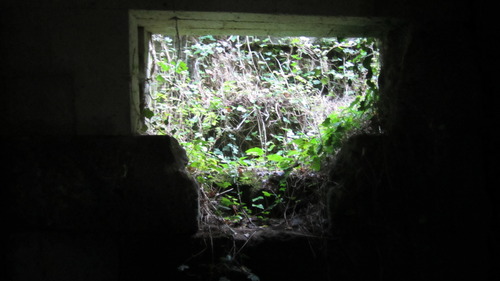
It was quite a dramatic view, looking up upon the rock of the city while strolling through these ancient burial sites. A little eerie.
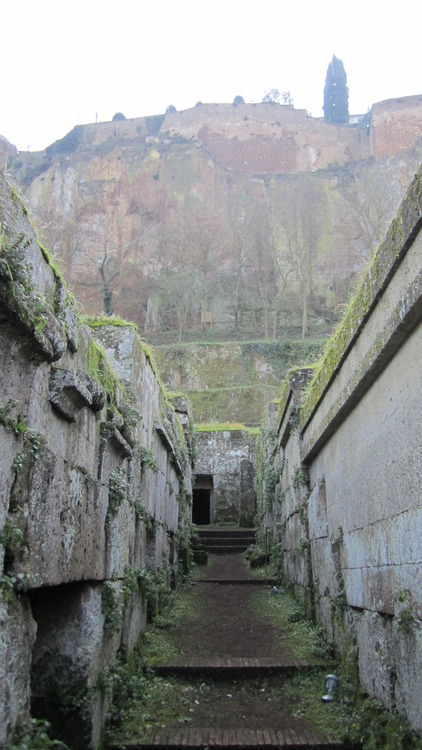

Above the entrance to each tomb, etched in the tufo, is the name of whomever is buried there. Anyone read Etruscan?
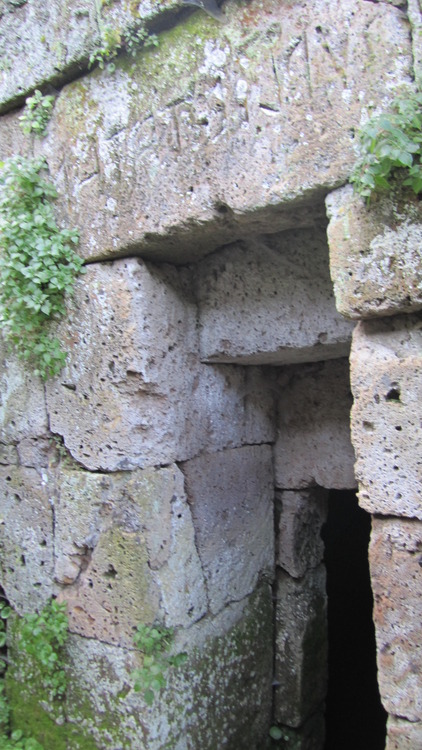
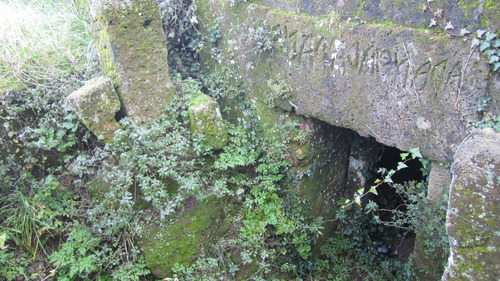

I walked around for a while, peeking into tombs – climbing in when I could – and enjoying the quiet. I didn’t see anyone else the entire time I was there.
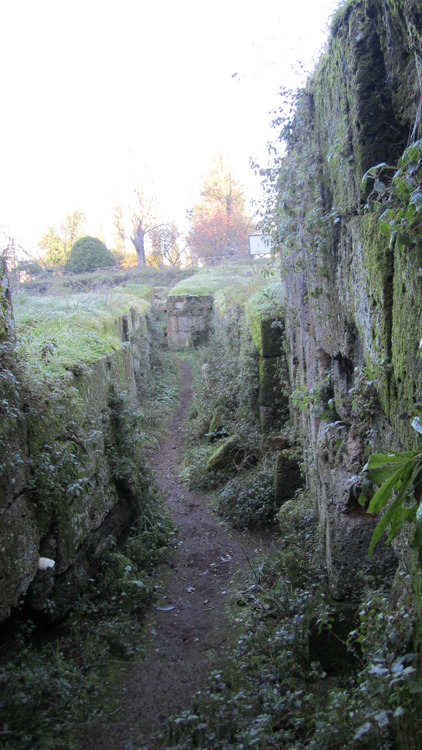
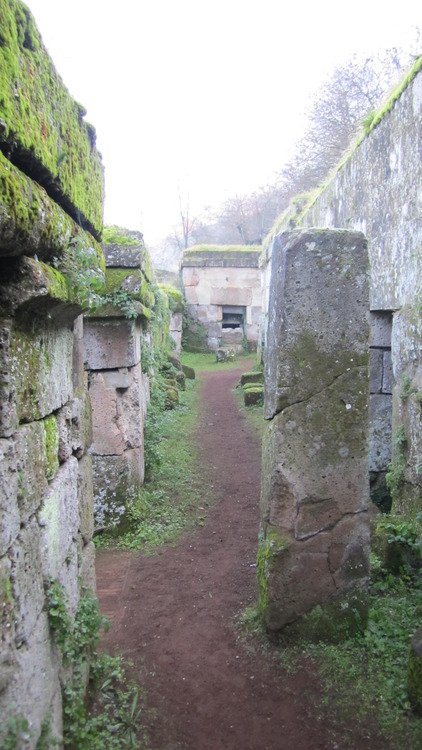
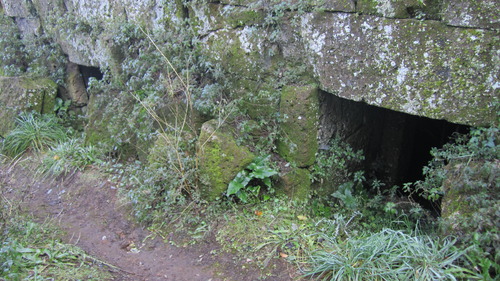
After a while everything started looking the same, so I climbed the steps on the other side of the necropolis, past the orange tree that somehow still had fruit hanging on in the middle of winter, and walked the path back up to Orvieto.
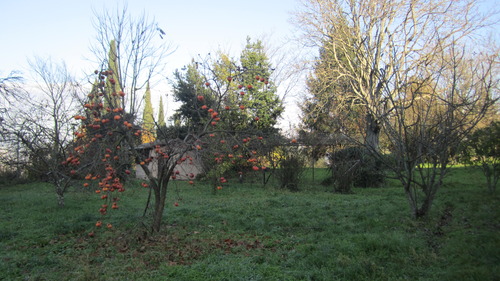
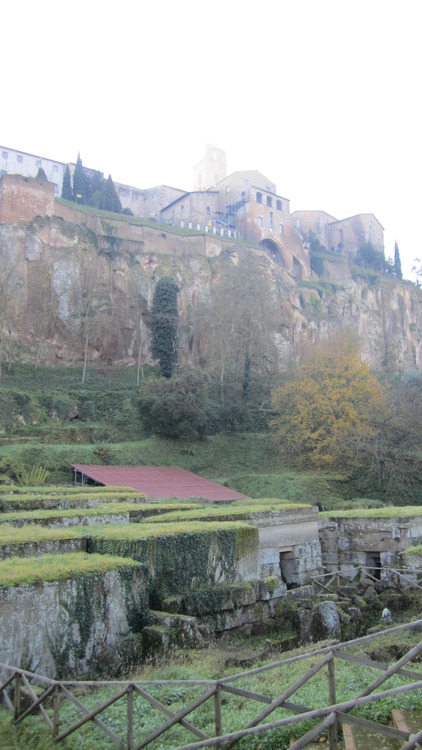
Comments
comments












Leave a Reply